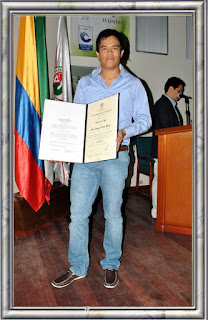Hans
Humberto Oviedo Gómez
Reflective
Teaching Course
M.
A. Edgar Alirio Insuasty
Neiva, September 29th,
2015
Reflecting upon my
Lesson Plan Intervention # 3
This third lesson is the
last of the three sessions proposed for developing the workshop. As you know, this
workshop was designed to be developed in three different but continuum
sessions, moving from general concepts and vocabulary related to the topic to
the possibility to perform, state positions and argue by giving supports.
The main goals proposed
in the objectives for the third session were to state a position (agree or
disagree) according to a statement given and, to assume a role to support a
position in favor or against abortion by giving arguments and defending it.
These objectives should be accomplished in sequence to the previous ones (last
two lessons) to guarantee good and significant results in terms of reflective
thinking.
 |
| Planning supports and arguments |
 |
| Debate guidelines - Workshop |
At the beginning of the third
session students were also shy. But in this opportunity, they faced this fact
easily and broke the ice quickly. This could be seen because students were in a
process in which the topic was known and they were already in contact with the
vocabulary. One of the things that could be improved is the pacing of the
Debate in last session. Maybe, there were some misunderstandings about what a
debate is although they have the definition and instructions included on the
workshop. As a consequence, I would be more specific in the role participants
and leaders have in a debate in the third session. This is done to improve and
enrich the debate session into a more enjoyable and challenging activity.
 |
| Debate session |
The application of this
workshop during these three sessions allowed me to be clear in the importance
of Learning Strategies for language learning
since they are, as stated by Oxford (1998), tools that foster active,
self-directed involvement, which in turn is fundamental to develop
communicative competence and language learning. This could be evidenced when
you are being explicit about the awareness, use, application and
internalization of Learning Strategies along the workshop. What I consider relevant
about my intervention was the initial idea of developing
content-based instruction towards controversial topics (critical thinking) by
targeting
the communicative skills. Although
there are some things and features to improve as mentioned above, this one was
a good attempt, the
objectives proposed were achieved and students were involved into the activities proposed.
References
Oxford, R. (1998). Language
Learning-Strategies: What every teacher should know. Boston: Heinle &
Heinle Publishers.








